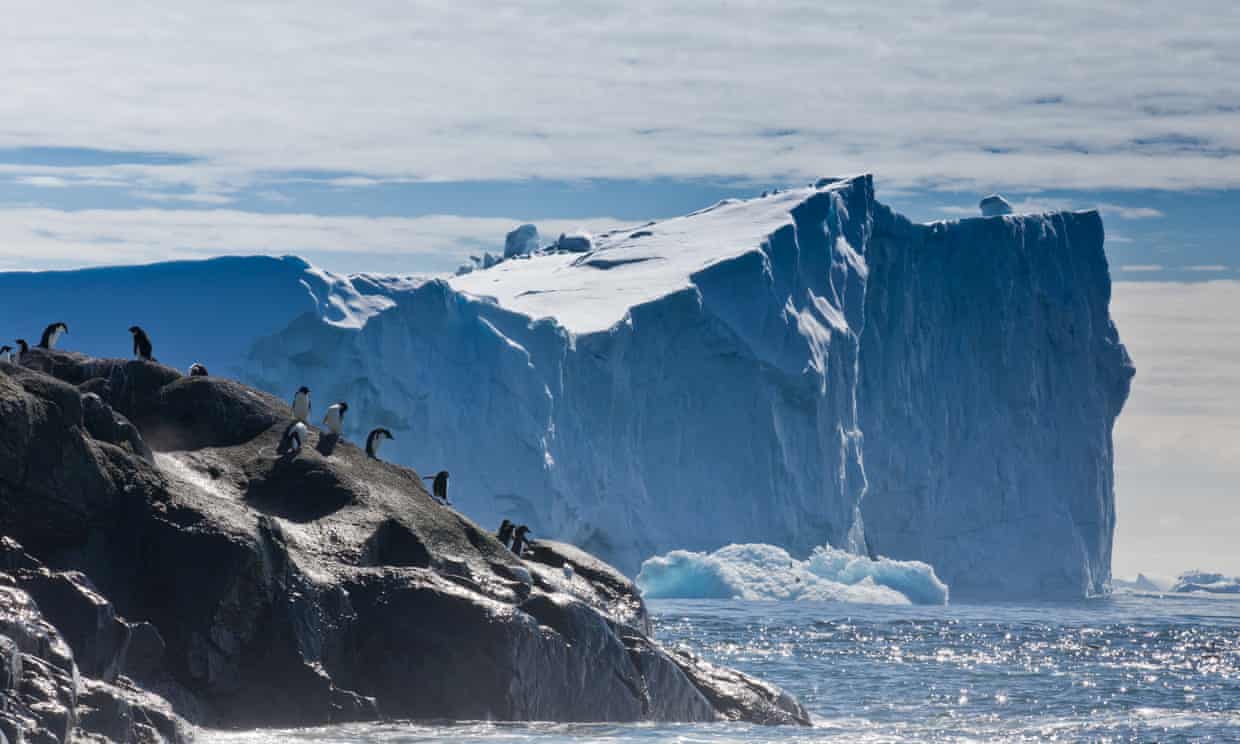(Credit: Sam Crimmin)
Showing posts with label ice cores. Show all posts
Showing posts with label ice cores. Show all posts
Monday, March 21, 2016
Thursday, February 4, 2016
Ice Cores and the Ancient Man
| Fig.1. AWI Core Repository (Credit: Hannes Grobe/AWI, CC-BY-SA-2.5) |
In 2003, paleoclimatologist William Ruddiman at the University of Virginia hypothesized that early humans significantly altered the climate by burning large areas of forests to clear land for farming and grazing. The greenhouse gases released into the atmosphere - mainly carbon dioxide and methane - halted a natural cooling cycle and possibly prevented another ice age.
Wednesday, December 9, 2015
Bones of Coral Reefs
Fig.1. Coral depends upon algae for survival (Credit:via GIPHY)
In the middle of the Pacific Ocean, just off the small island of Kiritimati, corals are dying off at an astonishing rate. The small atoll, also called Christmas Island, suffers from high water temperatures caused by the current El Niño that have reached 4℃ above normal. Although these temperatures might be nice for a beachgoer, they do not bode well for the survival of the atoll’s extensive coral reefs.
Labels:
biodiversity
,
biorepository
,
climate change
,
CO2
,
coral reefs
,
environmental change
,
fossils
,
genebank
,
GIFs
,
ice cores
,
NOAA
,
ocean acidification
,
oceans
Friday, December 4, 2015
In the News: Mammoths and Men
| Fig.1. Mammoth skeleton at the George C. Page Museum (Credit: Russ via Flickr, 2014) |
Artifacts, sediment cores, and mammoth bones all connect us to ancient history, either through culture or the natural world. This week in the news, we read about how to examine the past using old collections in new ways:
Labels:
archaeology
,
climate
,
climate change
,
environmental change
,
Follow Friday
,
ice cores
,
mammoth
,
oceans
,
sediment cores
Thursday, December 3, 2015
Of Ice and Insects
| Fig.1. Greenland Ice Sheet (Credit: Christine Zenino, 2009) |
Researchers at Stockholm University, Plymouth University, and the Natural History Museum, London (NHM) may have solved one of the most enduring puzzles from the last Ice Age. Around 12,880 years ago, the Northern Hemisphere experienced a sharp change in temperatures that culminated in a decrease of about 5℃ over 400 years. This event, called the Younger Dryas, is well documented in environmental records, but the cause had been largely unknown. In a study recently published in the journal Nature Communications, the researchers brought together three types of collections to address this mystery.
Tuesday, August 25, 2015
Ancient Giants in Warmer Times
Fig.1. Woolly Mammoth at the Royal BC Museum, Victoria, British Columbia (Credit: Tracy O via Flickr)
Between 40,000 to 10,000 years ago, the world experienced a mass extinction of megafauna, a diverse group of animals that included such members as the mastodon and the woolly rhino. Although humans are often blamed for the disappearance of these creatures - either through overkill or habitat modification - the underlying causes are more complicated than previously thought
Between 40,000 to 10,000 years ago, the world experienced a mass extinction of megafauna, a diverse group of animals that included such members as the mastodon and the woolly rhino. Although humans are often blamed for the disappearance of these creatures - either through overkill or habitat modification - the underlying causes are more complicated than previously thought
Wednesday, July 29, 2015
The Fall of a Civilization
Fig.1. Bronze head of a king, most likely Sargon of Akkad.
|
Labels:
agriculture
,
archaeology
,
climate
,
environmental change
,
ice cores
,
peat bogs
,
sediment cores
Thursday, July 16, 2015
Year(s) Without a Summer
Fig.1. The end of Alaska’s Augustine eruption of 2006, which lasted several months (Credit: Cyrus Read, USGS via Flickr)
In 1816, the Northern Hemisphere experienced the coolest summer on record, triggering crop failures and famine throughout Europe. The “Year Without a Summer” was later attributed to the eruption of Mount Tambora in 1815, a volcano in modern day Indonesia that killed an estimated 92,000 people.
Thursday, May 21, 2015
Teaching old data new tricks
Fig.1. Rock core samples, pictured, stored at the U.S. Geological Survey's Core Research Center. Data derived from core samples, among other types of samples, are useful in testing climate models. (Credit: USGS, 2012)
Labels:
climate
,
climate change
,
global warming
,
ice cores
,
NOAA
,
oceans
,
scientific collections
,
Spotlight
,
Throwback Thursday
,
tree rings
,
USGS
Friday, May 1, 2015
In the News: Jurassic Park Herbivores and More
Fig.1. The bones of this curious, plant-eating dinosaur was found by a seven-year-old in Chile (Credit: Gabriel Lio)
This week in #FollowFriday, exciting research projects show how vital museums are to the scientific community. Read about a new oddball dinosaur, a biodiversity center in peril, the cycle of climate change, and more:
Labels:
dinosaurs
,
environmental change
,
Follow Friday
,
ice cores
,
INBio
Thursday, February 19, 2015
Secrets of the Deep
Fig.1. The National Ice Core Laboratory holds 17,000 meters of ice cores from Antarctica, Greenland, and North America. The typical tube contains a one meter ice core section (Credit: Eric Cravens, National Ice Core Lab, USGS)
During the early morning hours of July 16, 1945, an atomic bomb was detonated for the first time ever. This test, completed in a remote corner of New Mexico by scientists with the U.S. Army, marked a significant point in human history. One study contends that this date is the beginning of the Anthropocene, while others believe that the “Age of Humans” may stretch back to around 10,000 years ago with the advent of agriculture. A recent study, however, hopes that work with ice cores may help to inform this debate, as well as show how humans affect the world around them.
Labels:
climate change
,
ice cores
,
pollution
Subscribe to:
Posts
(
Atom
)

